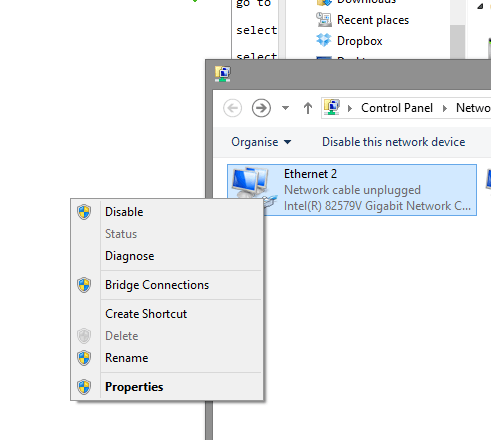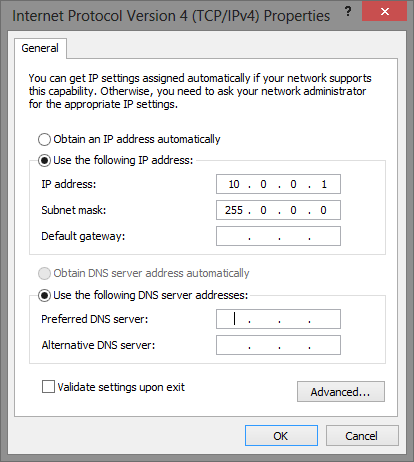10
5
I've got two systems that are right next to each other, and connected wirelessly to the same router. I want to connect the two of them together with an ethernet cable - both have gig-e and autonegotiation so it should work. I DON'T need the second system to have internet, but I need any specific tweaks to be on that system only.
I do not need to share internet. I need RDP to work, and thats it
The wireless runs on a 192.168.1.x subnet and ICS always runs on a 192.168.0.x subnet so that wouldn't be a problem.
Ideally I want this layout. Can I do this with ICS, or there some other free or open source way?
+---------------------------+ +-----------------------------+
| Laptop 1 | | Laptop 2 |
| Client- mobile | | 'server'- stationary system |
| <-----+-----> |
| RDP client | | RDP Server |
| MUST have wireless access | ethernet | Runs ICS or similar |
+---------+-----------------+ | wireless access optional |
| +-----------------------------+
|
|
|
|
|
|
|
+---------------+ wireless to internet





2I like the diagram. – KCotreau – 2011-06-21T02:16:37.617
@Journeyman Geek Thanks for the info. Of course, I realized that switches started using the uplink (sometimes on all ports) a long time ago. I did not realize that NICs also had that now. I think I mis-read what you were trying to do, so I will delete my answer and re-think it. – KCotreau – 2011-06-21T02:45:43.123
i worked most of it out, eventually. It was oddly simple ;p – Journeyman Geek – 2011-06-21T02:51:58.183
@Journeyman Geek "It was oddly simple", that was the reason I thought maybe it was a crossover cable. That could really trip someone up. – KCotreau – 2011-06-21T02:55:58.143
what tripped me up was forgetting about static IP addresses. I've been using ICS or routers for the most part so i never really had to think about this for the most part. – Journeyman Geek – 2011-06-21T03:00:16.057
@KCotreau: Auto-negotiation is part of the Gigabit spec standard. – paradroid – 2011-06-21T04:08:33.320
@paradroid Thanks, I learned that tonight. I have enjoyed answering questions in my first three weeks here, but I have also learned a thing or two. – KCotreau – 2011-06-21T04:19:17.293